IWC Schaffhausen
Available in The Shop: The IWC GST Chrono Rattrapante (and how it works)
There’s a real technical imprimatur to the GST watches, like the depth-gauge equipped GST Deep One, and this example, the IWC GST Chrono Rattrapante, otherwise known as a split seconds chronograph. But hang on. A split seconds chronograph is not as name implies a timepiece that shatters the second down into fractions. Basically any chronograph beating from 2.5 Hertz good for 1/5th of a second to 5 Hertz, which divides down to 1/10th of a second will already achieve this for you. What a split seconds chronograph does it allows you to stop and record an intermediate time or lap time.
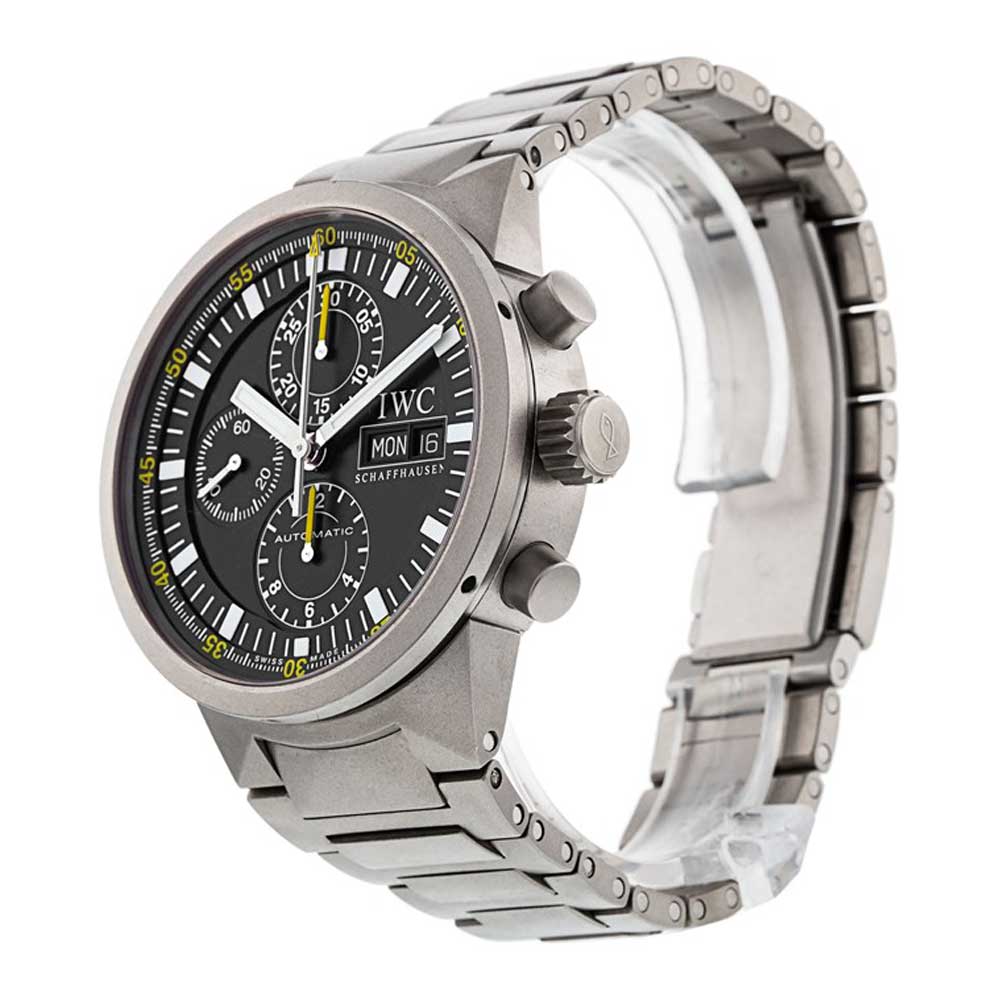
IWC Schaffhausen GST Chrono Rattrapante IW371503
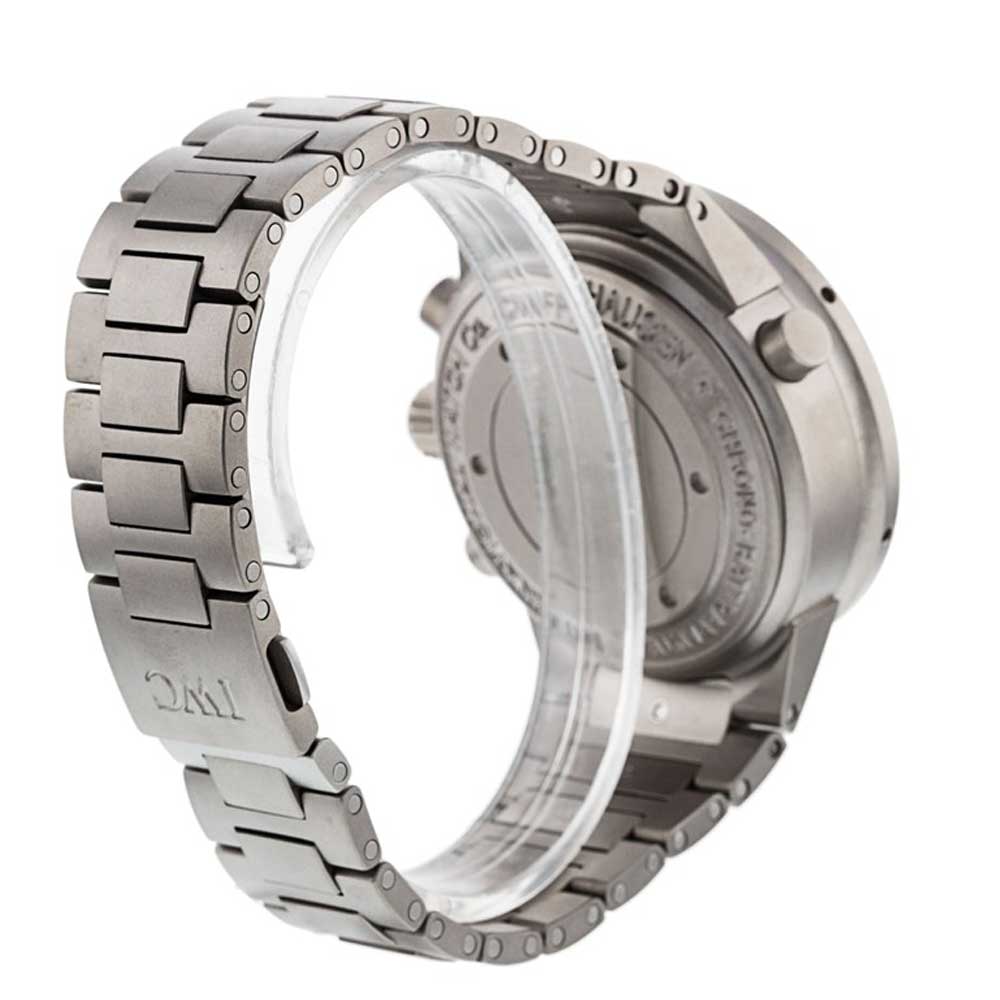
IWC Schaffhausen GST Chrono Rattrapante IW371503
First Apart, Then Together Again
When the chronograph is activated the chronograph seconds hand starts to spin around the dial. In turn, it drives a minute counter, which in turn drives an hour counter (if one exists). So, on the dial side of a watch this means when you start the chronograph all this info gets set into action. When you stop it, checking the big seconds hand and where it sits relative to the small divisions on the dial will give you a reading of seconds and fractions of a second. The minute counter also called a totalizer will total the number of minutes that have elapsed. You get the picture. It’s a stopwatch function in your wristwatch.
But what if you’re a racecar driver or an aforementioned dissolute aristocratic gambler and you want to check the lap time of your car or horse without affecting the overall timing of the race. Well unless you had a separate stopwatch you’re shit out of luck. That was until the advent of the Split Seconds Chronograph, where there is a button either a pusher on the left side of the case or integrated into the crown. Want to record a lap time? Simply hit this button and you’ll see what you thought was a single chronograph seconds hand is actually two hands running together! Suddenly they’ll split apart like Jean Claude Van Damme’s legs between two semis. The split second hand stops so you can record the lap time while the chronograph seconds hand keeps on truckin’. Hit the button again and they jump back together without missing a beat. This action, one of the visually coolest in all watchmaking, is what provides this complication with its evocative Gallic sobriquet “Rattrapante” or “to catch-up.”
IWC Doppelchronograph
The thing with IWC is that it has always striven to endow the highest traditional complications with a greater sense of functionalism while making the price of these complications far more accessible. It achieved this with the incredible fully synchronized perpetual calendar designed by Kurt Klaus, it did this with its modular minute repeater mechanism and with its mysterious tourbillon. Says Kurt Klaus, the brand’s former technical director, Revolution hall of famer and watchmaking demigod, “It has always been IWC’s way to pursue functional innovation. The split seconds chronograph is an incredible complication, but in the past it involved a great deal of repeated fine tuning to set up properly and they were also somewhat fragile and susceptible to damage.”
How a Split Seconds Works
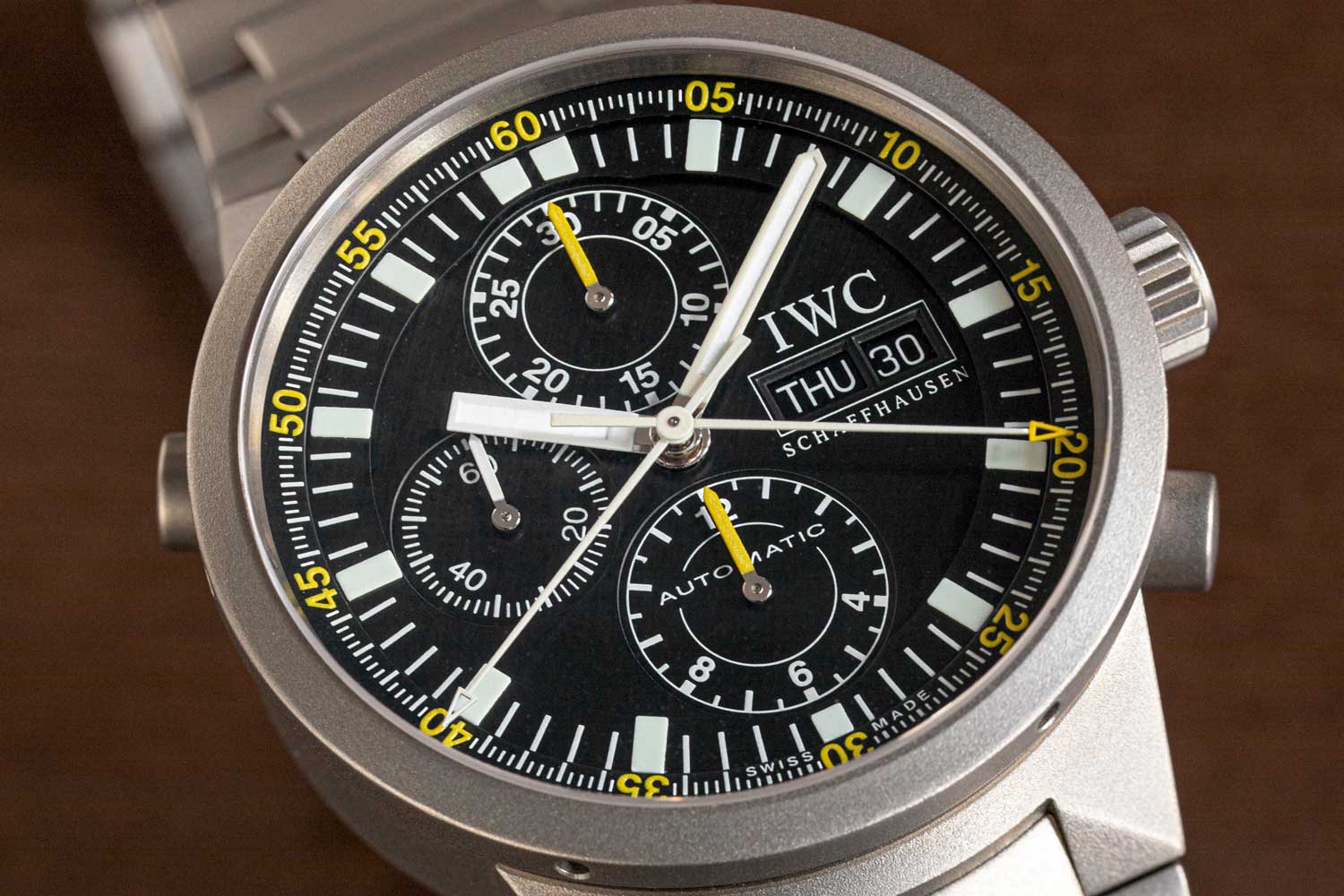
IWC GST Chrono Rattrapante (Image: Revolution©)
OK all that makes sense. But how do you get the split seconds hand to catch up with the running chronograph hand? That is where the magic happens. The split second hand is normally locked in place with the chronograph second hand. This happens because fixed to the split wheel is a return lever which is engaged with a heart shaped cam fixed to the chronograph wheel. Now when the split second wheel stops the lever continues to run around the edge of the heart cam because it is fitted with a jeweled roller. The return lever is under tension from a spring bar. So that when the split wheel is released the spring loaded return lever will immediately leap back to the lowest point of resistance against the heart cam which matches up with the hands running together.
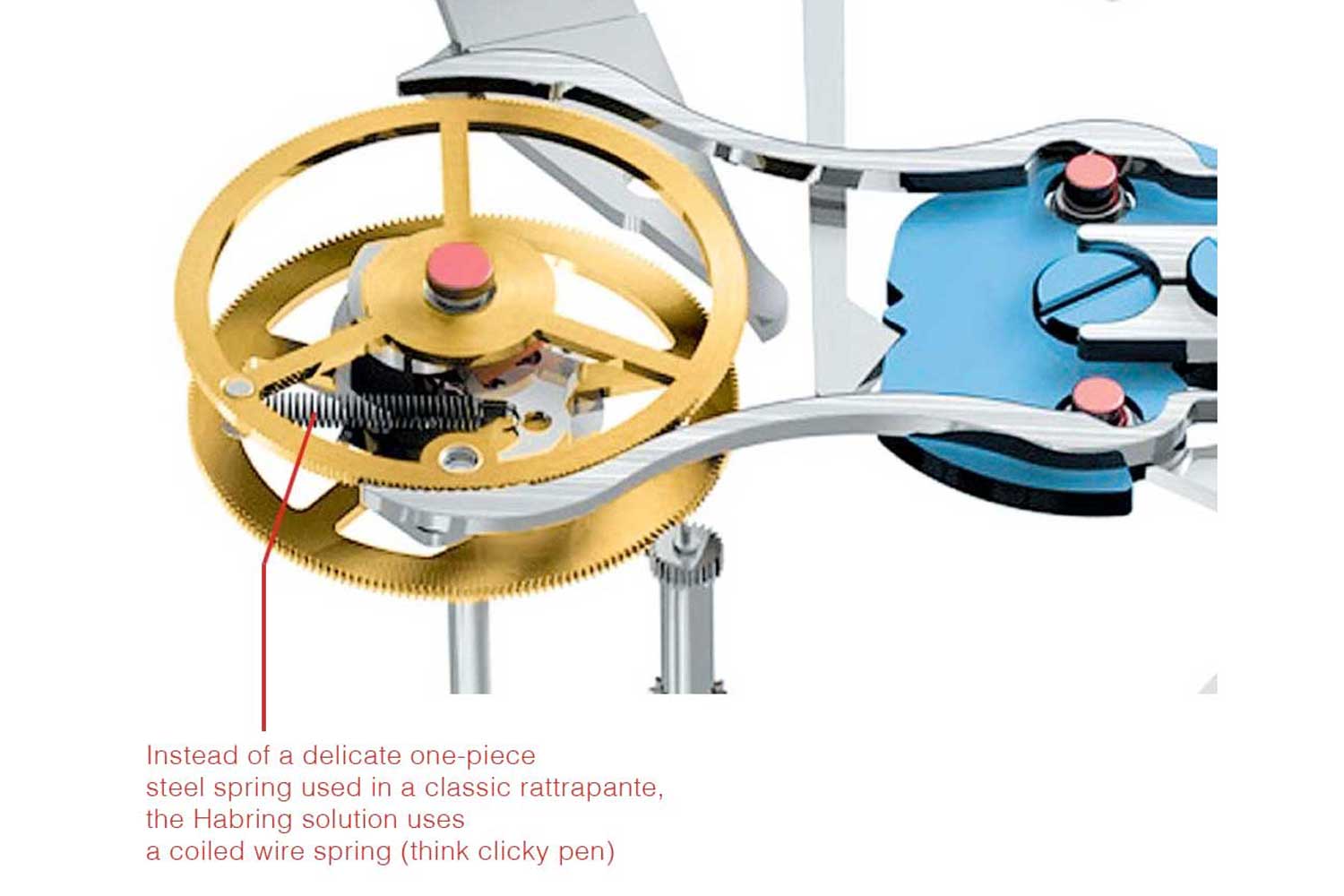
Split seconds brake mechanism
Habring solved this with two key solutions. The first was that he changed out the solid spring bar, to a small, coiled spring like the type you find inside a pen. Just way smaller. This gave a much greater elasticity to the return lever. The second is that he built his split second mechanism on top of the baddest, most bulletproof tractor of a movement, the Valjoux 7750. Industrially produced and totally robust – you could press the buttons all day long and even in the wrong sequence – this example was made between 2001 and 2004, the IWC GST Rattrapante had a short production run but the present example at our shop is one of the most sought-after references within the family. The 43mm watch is quite sizeable but perfect for those looking for a casual sports watch with unique functions. It has a titanium case and bracelet, so that makes sure that the watch isn’t too hefty for its size.
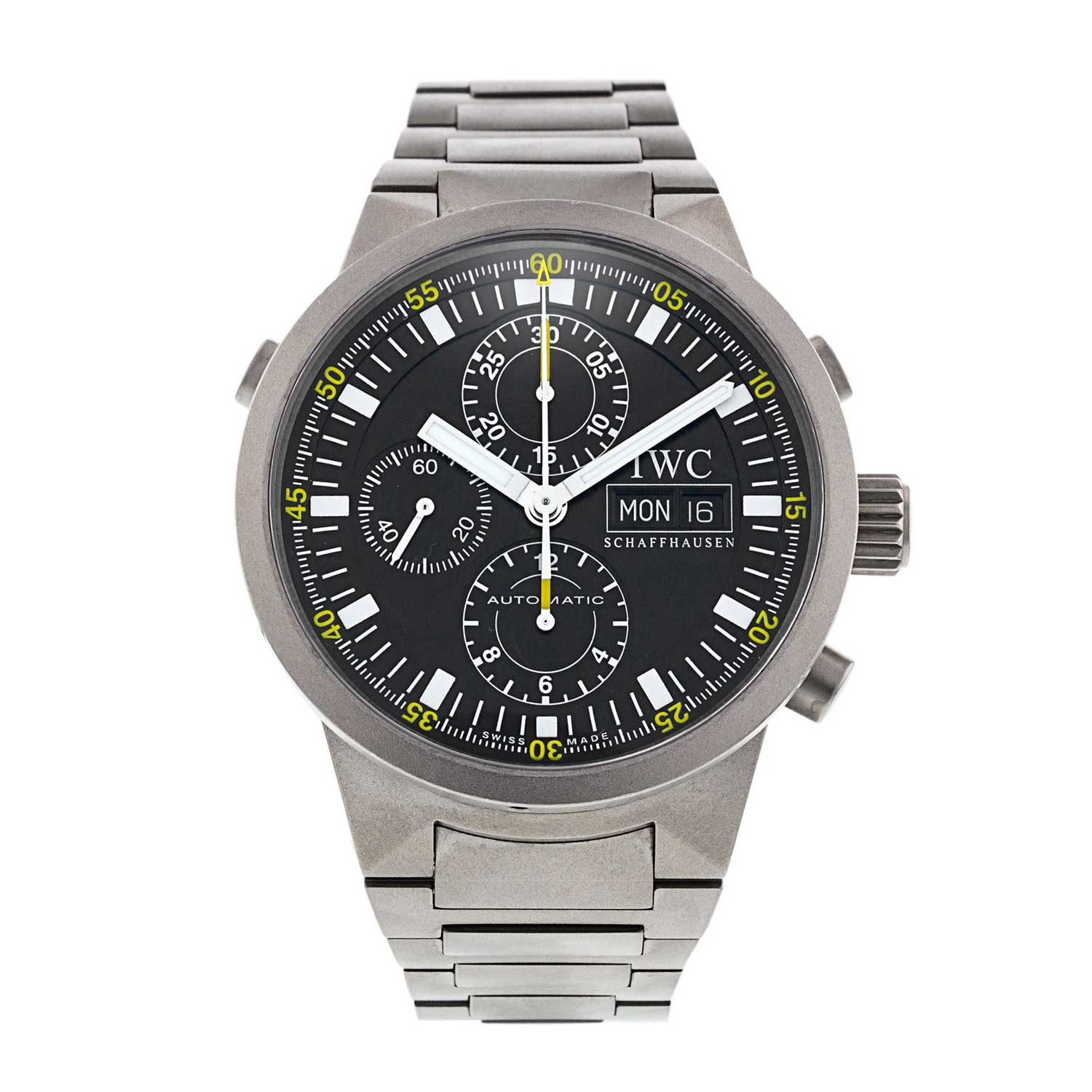
The present example of the IWC GST Chrono Rattrapante at our shop is from 2003.
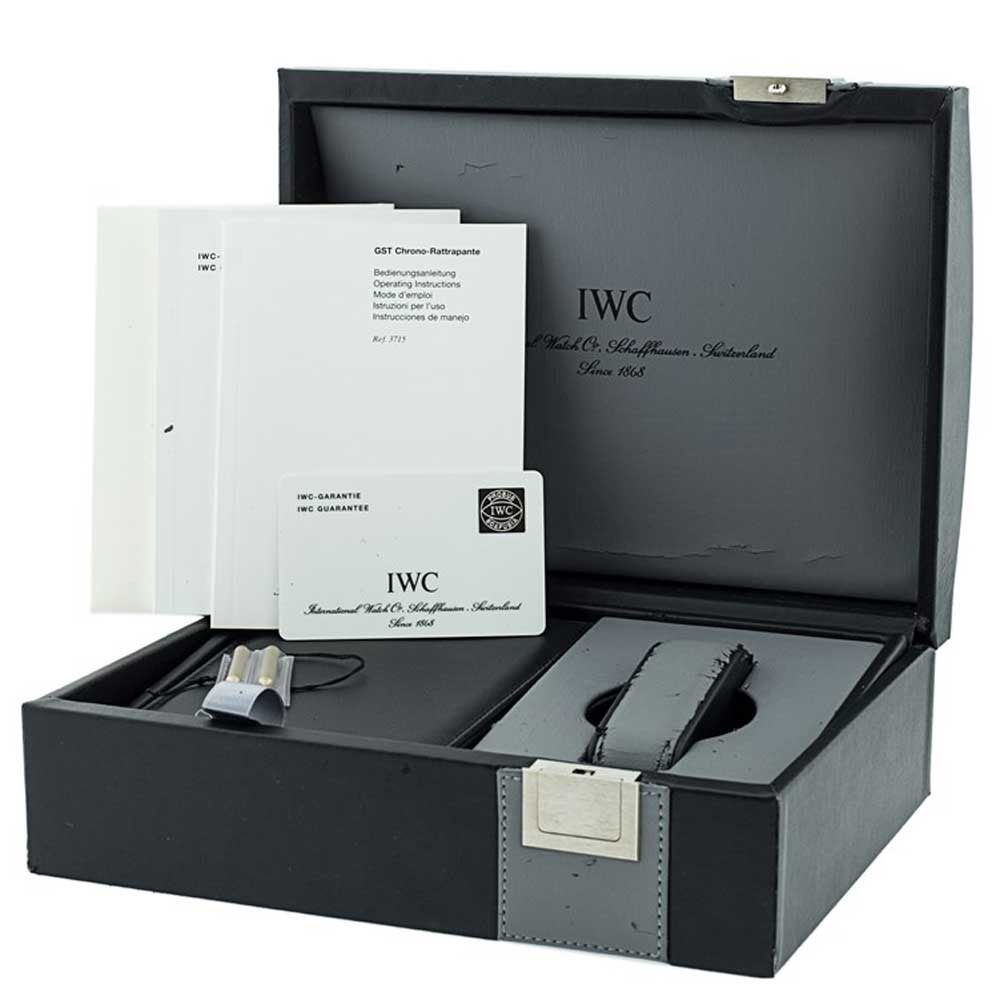
The watch comes with a complete set of original box and papers.










